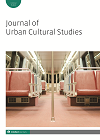
Full text loading...

While the concept of transparency generally has positive connotations, as it suggests an attempt at honesty and the eradication of corruption, Ray Loriga explores its darker side in his 2017 novel Rendición. In his novel, a transparent domed city with buildings constructed entirely of glass is intended to be a utopian refuge in a country plagued by war and scarcity of resources; however, this self-sufficient city is hardly ideal, as transparency encourages citizens to constantly watch one another, engage in self-monitoring and suppress individuality. An analysis of the transparent structures in Ray Loriga’s novel Rendición facilitates a discussion about what transparency means on the internet, especially social media, and ways that utopian aspirations of transparency may sometimes have unintended consequences. This analysis is also informed by a survey of metaphorical appropriations of transparency in the cultural imaginary, with more of an emphasis on urban architecture and literature.

Article metrics loading...

Full text loading...
References


Publication Date:
https://doi.org/10.1386/jucs_00046_1 Published content will be available immediately after check-out or when it is released in case of a pre-order. Please make sure to be logged in to see all available purchase options.